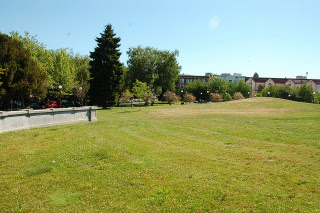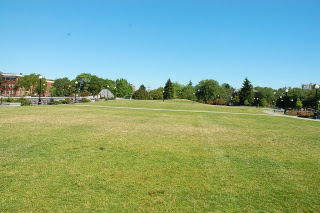It is in Seattle that I start to believe that art is a critical component of public landscape. It is not that good Landscape Architecture can't stand on its own or is not art itself. It is that art adds another layer of meaning. Good landscape architecture should engage the user. It should jolt the user out of their typically passive experience of landscape to a level of active engagement. Art can spark active engagement. Art is bold, italics, underlines or quotes in the landscape. It stands out on the page and is not easy to ignore.
Art is a component of culture. Peirce F. Lewis writes in "Axioms for Reading the Landscape" The basic principle is this: that all human landscape has cultural meaning, no matter how ordinary that landscape may be. " Oklahoma City has been building a new park along the Oklahoma River. From the highway, the place Oklahoma has been designed to be viewed from, immense expanses of mowed lawn dwarf a paved running path. The lawn is at the scale of a freeway. I wonder what this new park reads? Culture? History? Cal Anderson speaks of a people that value art, culture and community. It invites the community to enter, to stroll, to sit, to play, to meditate. It engages with the user even when the user is lying down reading a book.
It is not possible to enjoy Cal Anderson park with out touching your level of cultural awareness. Water Works ask the park-user to participate in a dialog. And that starts with "What am I?", "What do I mean?", and "Am I valuable?". Cal Anderson reads "History is important." and "Culture is important." History and art are directly linked with Water Works.


































